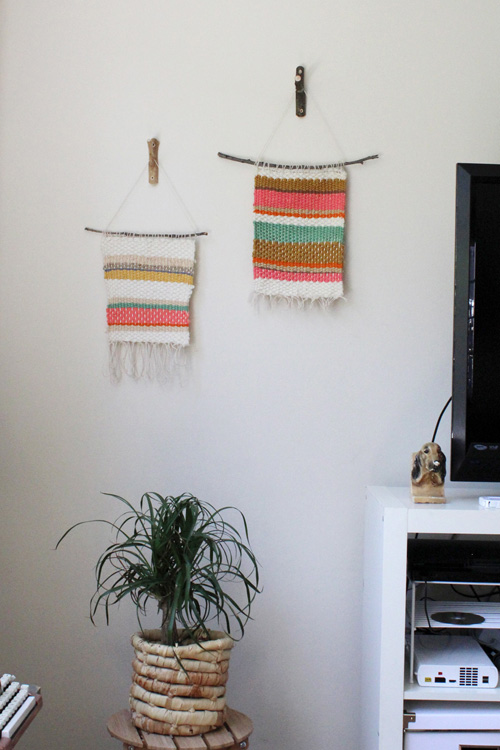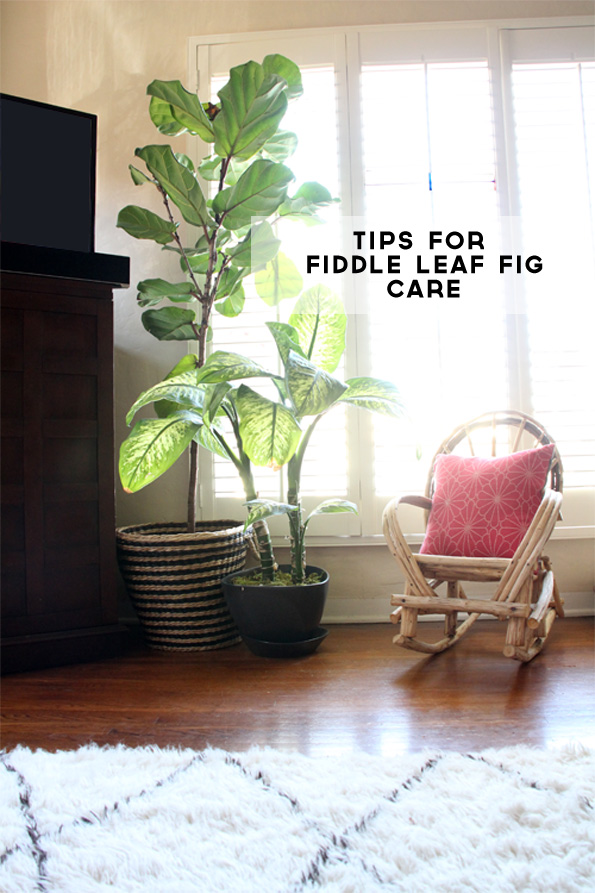
I don’t have a really great green thumb and I’ve been known to kill my share of houseplants, including a scraggly fiddle leaf fig that used to live in our dining room and that I was trying so hard to bring back to life. But! I have happy, happy news! All efforts made to keep my 10-month-old living room fig (picked up for $25) thriving are so far successful.
I’m occasionally asked how it’s going for this guy and if I have any tips, so I thought I’d share what I’ve learned over the past two years of indoor tree life.
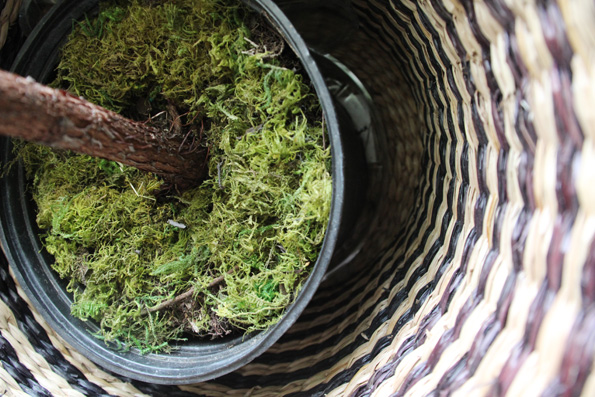
One of the challenges with my very first fiddle leaf was the way in which it was potted. I actually kept it in the same pot that I purchased it in from Lowe’s thinking that that would be its best home, what I didn’t realize was how important it was for an indoor tree to have the ability to drain its pot of all water to avoid shocking the roots or root rot. My standard pot was not a plastic 10 gallon container and it was sans holes.
As you can see in the photo above, my new method is to use a thin plastic tray (found for $.35 at most home improvement stores) inside of my indoor vessel (in this case a big striped basket from Ikea) with the original plastic container. I could repot into any container with holes but because the basket hides the plastic I haven’t worried about it just yet. I added a little craft moss to the top when I first brought it home, Taylor’s most recent and favorite discovery :).
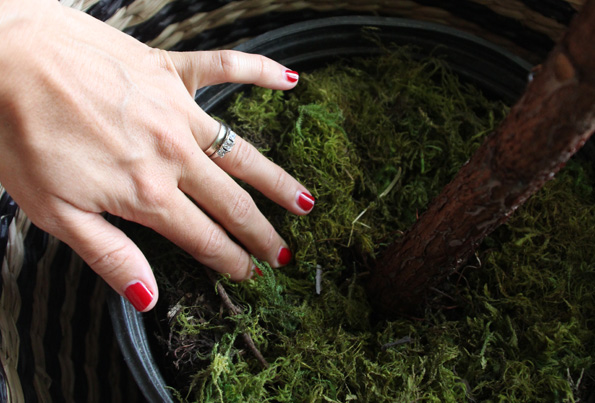
The second trick for me has been to be very conservative with water. I almost feel like the poor plant has to go through a terrible drought before he gets another bath. Per recommendations, I wait until the dirt is bone dry.
I have learned that fiddle leaf figs hate over watering. Really, really they do. They’ll tell you that they need water when their leaves begin to turn down and when they begin looking rather sad. It works out to be about every 10 days or so (in the beginning I watered every Sunday but now I watch for the leaves) and then I add a couple of cups of water until I see liquid run through to the tray. Brown leaves means you have waited too long, so if you start to see a bit tinging or even have to prune a leaf off, try for a few less days next time.
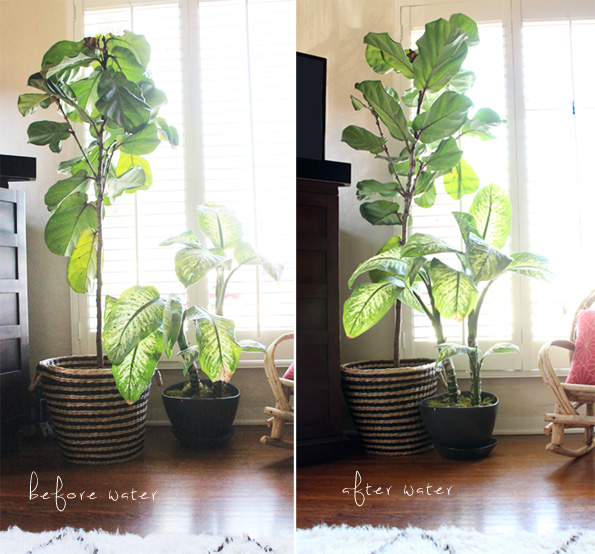
Within a couple of days that tree will perk right back up! It’s amazing to watch.
Last but not least is sun. These guys thrive off of sun and pull their entire bodies towards any light coming into a room. The final reason I lost my dining room fiddle leaf fig is because he wasn’t close enough to a window. And it can’t be just any window, I found that these trees weren’t thriving next to certain windows (because they didn’t get as much direct light throughout the day, etc) and played with placement in the house until realizing that it was our BIGGEST living room window that would be most successful. I sometimes rotate him so that he doesn’t start to grow at a huge angle.
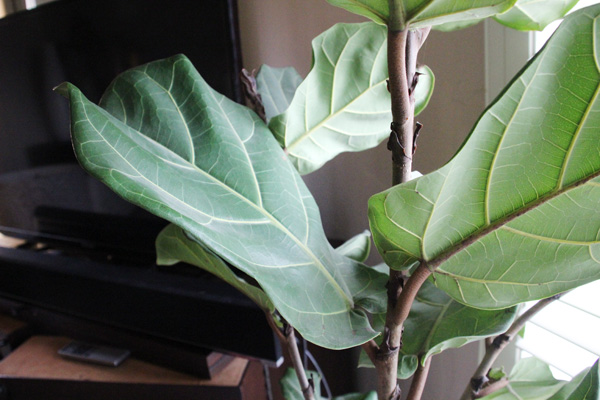
Fiddle leaf figs will only produce as many leaves as they have the natural light to support, so if your tree starts to begin to thin it might be cause for worry or it might be that it’s just finding the right amount to thrive with. The goal is for big green leaves, new growth and stems that point up and towards the sun.
I do hope that this guy lives for years and years to come, but it is by far the most temperamental houseplant I’ve ever owned and I’m just grateful month-by-month that it keeps our living room cheery. I hope these tips help if you have a similar indoor tree that you adore!




